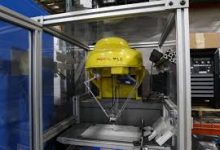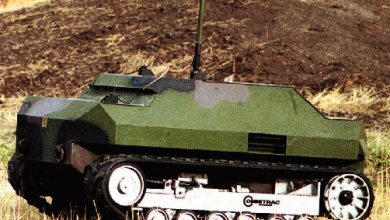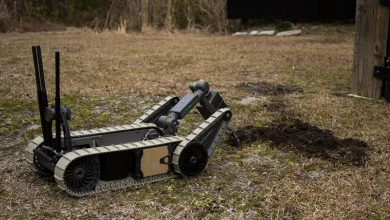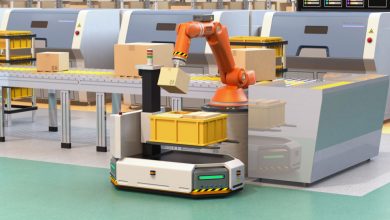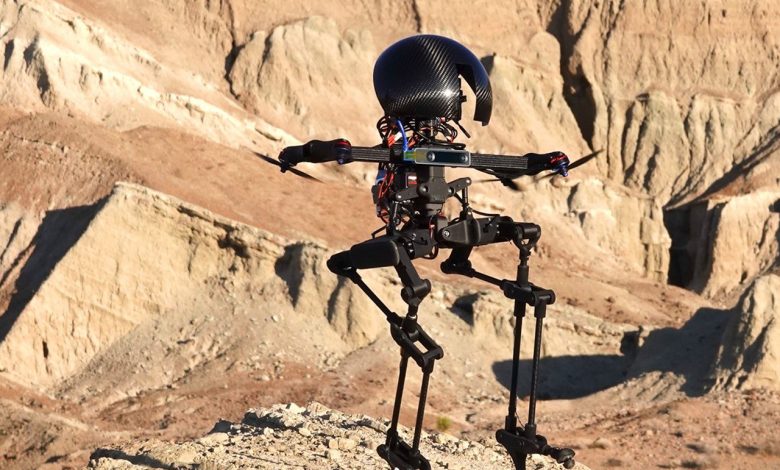
Introduction:
Hybrid robotics represents an exciting frontier in the realm of robotics, blending the best of biological and mechanical systems to create innovative and adaptable machines. This interdisciplinary field draws inspiration from nature’s design principles while leveraging cutting-edge technologies to push the boundaries of what is possible. In this comprehensive overview, we delve into the foundations, applications, challenges, and future prospects of hybrid robotics, exploring its potential to revolutionize industries and enhance human capabilities.
Foundations of Hybrid Robotics:
At its core, hybrid robotics seeks to merge biological and artificial components to create systems that exhibit the strengths of both worlds. This can involve integrating living tissues with synthetic materials, designing bio-inspired control algorithms, or developing interfaces for seamless interaction between biological and mechanical elements. By combining the robustness and precision of mechanical systems with the adaptability and efficiency of biological organisms, hybrid robots can tackle a wide range of tasks with unprecedented flexibility and effectiveness.
Foundations of Hybrid Robotics: Bridging Biology and Technology
Hybrid robotics stands at the intersection of biology and technology, blending principles from these diverse disciplines to create innovative systems with a wide range of applications. At its core, the foundations of hybrid robotics lie in the integration of biological components with mechanical systems, leveraging the unique strengths of each domain to achieve remarkable functionality and adaptability. In this exploration of the foundations of hybrid robotics, we delve into the key concepts, methodologies, and principles that underpin this dynamic field.
Integration of Biological and Mechanical Components:
At the heart of hybrid robotics is the seamless integration of biological and mechanical components to create systems that exhibit the characteristics of both worlds. This integration can take various forms, ranging from incorporating living tissues into robotic platforms to developing bio-inspired control algorithms that mimic the behavior of biological organisms. By combining the flexibility, efficiency, and self-regulation of biological systems with the precision, durability, and programmability of mechanical systems, hybrid robots can perform tasks with unprecedented adaptability and effectiveness.
Biomimicry and Bio-Inspired Design:
A fundamental principle of hybrid robotics is biomimicry, the process of emulating nature’s design principles to inspire the development of innovative technologies. By studying biological organisms and their mechanisms of locomotion, sensing, and adaptation, researchers can derive insights that inform the design of robotic systems. For example, biohybrid robots inspired by the locomotion of animals such as snakes, insects, or birds can navigate complex environments with agility and efficiency, leveraging nature’s solutions to overcome engineering challenges.
Biohybrid Materials and Interfaces:
Another key aspect of hybrid robotics is the development of biohybrid materials and interfaces that enable seamless interaction between biological and mechanical components. These materials may include biocompatible polymers, hydrogels, or conductive nanomaterials that facilitate communication between living tissues and electronic circuits. By designing interfaces that support cell adhesion, growth, and functionality, researchers can create biohybrid systems that integrate biological tissues with electronic sensors, actuators, and control systems, enabling new capabilities and applications.
Control and Coordination in Hybrid Systems:
Controlling hybrid robotic systems poses unique challenges due to the complexity of integrating biological and mechanical components. Designing control algorithms that can coordinate the behavior of diverse elements while adapting to changing environmental conditions requires innovative approaches and methodologies. Researchers draw inspiration from biological systems, such as neural networks or swarming behavior, to develop bio-inspired control strategies that enable robust, adaptive, and autonomous operation of hybrid robots in real-world scenarios.
Ethical and Regulatory Considerations:
As hybrid robotics advances, ethical and regulatory considerations surrounding the use of living organisms in robotic systems become increasingly important. Ensuring the responsible and sustainable development of hybrid technologies requires thoughtful consideration of ethical principles, societal values, and environmental impacts. Researchers and policymakers must work together to establish guidelines and regulations that govern the use of biological materials in robotics, promoting transparency, safety, and accountability in research and development activities.
In conclusion
The foundations of hybrid robotics represent a convergence of biology and technology, offering unprecedented opportunities for innovation and discovery. By integrating biological and mechanical components, drawing inspiration from nature’s design principles, and addressing ethical and regulatory considerations, researchers are paving the way for groundbreaking advancements in this dynamic field. As hybrid robotics continues to evolve, it promises to revolutionize industries, enhance human capabilities, and unlock new frontiers of exploration and discovery.
Applications of Hybrid Robotics:
The versatility of hybrid robotics lends itself to a myriad of applications across various fields, including medicine, agriculture, exploration, and beyond. In the realm of healthcare, biohybrid robots hold promise for minimally invasive surgeries, targeted drug delivery, and tissue engineering. By incorporating biological components, such as cells or tissues, into robotic platforms, researchers aim to create devices that can interact seamlessly with the human body, enhancing diagnostic and therapeutic capabilities.
In agriculture, hybrid robots equipped with sensors and actuators can revolutionize farming practices by autonomously monitoring crops, detecting pests and diseases, and optimizing resource usage. By leveraging the adaptability of biological systems, these robots can respond dynamically to changing environmental conditions, improving crop yields and sustainability.
In exploration, hybrid robots offer unprecedented opportunities for remote sensing, environmental monitoring, and disaster response. Whether navigating treacherous terrain, exploring extreme environments, or assisting in search and rescue missions, biohybrid robots inspired by nature’s design principles can overcome obstacles that traditional robots cannot, enabling safer and more effective exploration of unknown frontiers.
Exploring the Wide Range of Applications for Hybrid Robotics
Hybrid robotics, with its unique blend of biological and mechanical components, holds immense potential across a wide spectrum of industries and disciplines. From healthcare to agriculture, exploration to manufacturing, the applications of hybrid robotics are as diverse as they are promising. In this detailed exploration, we’ll delve into some of the most compelling and innovative applications of hybrid robotics, showcasing how this cutting-edge technology is reshaping the future in numerous fields.
Healthcare and Medicine:
In the realm of healthcare, hybrid robotics is revolutionizing diagnosis, treatment, and patient care. One of the most promising applications is in minimally invasive surgery, where biohybrid robots can navigate delicate tissues with unparalleled precision, reducing trauma and speeding up recovery times. Additionally, biohybrid systems are being developed for targeted drug delivery, enabling precise administration of medications to specific sites within the body while minimizing side effects. Furthermore, tissue engineering and regenerative medicine stand to benefit greatly from hybrid robotics, with researchers exploring the use of biohybrid constructs to repair and regenerate damaged tissues and organs.
Agriculture and Environmental Monitoring:
In agriculture, hybrid robotics has the potential to transform farming practices and improve crop yields. By integrating sensors, actuators, and biological components, hybrid robots can autonomously monitor crops, detect pests and diseases, and optimize resource usage. These systems can also help mitigate environmental impact by reducing the need for pesticides and fertilizers through targeted application methods. Furthermore, biohybrid robots equipped with advanced sensing capabilities can be deployed in natural environments for environmental monitoring, biodiversity assessment, and pollution detection, providing valuable insights into ecosystems health and resilience.
Exploration and Disaster Response:
Hybrid robotics is poised to revolutionize exploration and disaster response efforts by creating robots that can adapt to diverse and challenging environments. Biohybrid robots inspired by the locomotion of animals such as snakes, insects, or fish can navigate rough terrain, squeeze through narrow spaces, and even swim through water, enabling exploration missions in remote or hazardous locations. Additionally, these robots can be equipped with sensors and cameras to assist in disaster response efforts, providing valuable situational awareness and helping locate survivors in disaster zones.
Manufacturing and Industry:
In manufacturing and industry, hybrid robotics offers opportunities for increased efficiency, flexibility, and automation. By combining the strength and precision of mechanical systems with the adaptability and dexterity of biological components, hybrid robots can perform complex tasks with greater speed and accuracy. For example, biohybrid robots equipped with soft grippers and tactile sensors can handle delicate materials with finesse, while bio-inspired control algorithms enable autonomous decision-making and coordination in multi-robot systems. Furthermore, hybrid robots can be employed in additive manufacturing processes, where biological materials are used to create intricate structures with high precision and efficiency.
Assistive Technologies and Rehabilitation:
Hybrid robotics is also making significant strides in the field of assistive technologies and rehabilitation. By integrating biological sensors and actuators with robotic prosthetics and exoskeletons, researchers are developing devices that restore mobility and functionality to individuals with disabilities or injuries. These biohybrid systems can adapt to the user’s movements and provide assistance as needed, enabling greater independence and quality of life. Additionally, biohybrid robots are being explored for applications in physical therapy and rehabilitation, where they can provide personalized assistance and feedback to patients undergoing recovery from injury or surgery.
In conclusion
The applications of hybrid robotics are vast and varied, spanning numerous industries and disciplines. From healthcare to agriculture, exploration to manufacturing, this cutting-edge technology is driving innovation and reshaping the future in profound ways. As research and development in hybrid robotics continue to advance, we can expect to see even more groundbreaking applications emerge, further demonstrating the transformative potential of this exciting field.
Challenges and Considerations:
Despite the immense potential of hybrid robotics, several challenges must be addressed to realize its full benefits. One major obstacle is the integration of biological and mechanical components in a way that ensures compatibility, reliability, and safety. Developing robust interfaces for communication between biological tissues and electronic circuits, for example, requires innovative engineering solutions and careful consideration of biocompatibility and bioethics.
Moreover, the complexity of hybrid systems poses challenges for control, optimization, and scalability. Designing control algorithms that can coordinate the behavior of diverse components while adapting to changing conditions remains a significant research frontier. Additionally, ensuring the ethical and responsible use of living organisms in robotic systems requires thoughtful consideration of societal values, regulatory frameworks, and environmental impacts.
Navigating the Challenges and Considerations in Hybrid Robotics
As hybrid robotics continues to push the boundaries of innovation and technological advancement, it is essential to acknowledge and address the various challenges and considerations inherent in this dynamic field. From technical hurdles to ethical dilemmas, navigating the complexities of hybrid robotics requires careful attention and thoughtful deliberation. In this comprehensive exploration, we delve into the key challenges and considerations facing researchers, engineers, and policymakers in the realm of hybrid robotics.
Integration of Biological and Mechanical Components:
One of the primary challenges in hybrid robotics is the seamless integration of biological and mechanical components. Ensuring compatibility, reliability, and functionality between these diverse elements can be complex and technically demanding. Researchers must develop innovative solutions for interfacing biological tissues with electronic circuits, sensors, and actuators, while also considering factors such as biocompatibility, durability, and long-term stability. Achieving robust and reliable integration is crucial for the development of effective biohybrid systems across various applications.
Control and Coordination in Hybrid Systems:
Controlling hybrid robotic systems poses unique challenges due to the complexity of integrating biological and mechanical components. Designing control algorithms that can coordinate the behavior of diverse elements while adapting to changing environmental conditions requires innovative approaches and methodologies. Researchers draw inspiration from biological systems, such as neural networks or swarming behavior, to develop bio-inspired control strategies that enable robust, adaptive, and autonomous operation of hybrid robots in real-world scenarios.
Ethical and Regulatory Considerations:
As hybrid robotics advances, ethical and regulatory considerations surrounding the use of living organisms in robotic systems become increasingly important. Ensuring the responsible and sustainable development of hybrid technologies requires thoughtful consideration of ethical principles, societal values, and environmental impacts. Researchers and policymakers must work together to establish guidelines and regulations that govern the use of biological materials in robotics, promoting transparency, safety, and accountability in research and development activities.
Safety and Reliability:
Ensuring the safety and reliability of hybrid robotic systems is paramount, particularly in applications where human interaction or critical operations are involved. Researchers must rigorously test and validate biohybrid systems to mitigate the risk of malfunction or unintended consequences. This includes assessing the performance of biological and mechanical components under various environmental conditions, identifying potential failure modes, and implementing robust fail-safe mechanisms to prevent accidents or injuries.
Scalability and Accessibility:
Scaling up hybrid robotics technologies to meet the demands of real-world applications presents significant challenges in terms of cost, complexity, and accessibility. Researchers must develop scalable manufacturing processes for producing biohybrid components at a reasonable cost and in large quantities. Additionally, efforts should be made to democratize access to hybrid robotics technologies, ensuring that they are accessible to researchers, engineers, and innovators from diverse backgrounds and regions.
Public Perception and Acceptance:
Public perception and acceptance of hybrid robotics technologies play a crucial role in their adoption and integration into society. Addressing concerns related to privacy, security, and the ethical use of living organisms in robotics is essential for building trust and fostering acceptance among stakeholders. Researchers and developers must engage with the public through education, outreach, and transparent communication to promote understanding and awareness of the potential benefits and risks associated with hybrid robotics.
In Conclusion,
navigating the challenges and considerations in hybrid robotics requires a multidisciplinary approach, involving collaboration among researchers, engineers, policymakers, and the public. By addressing technical hurdles, ethical dilemmas, and societal concerns, we can harness the transformative potential of hybrid robotics to drive innovation, improve quality of life, and shape a more sustainable and equitable future.
Future Prospects:
Despite these challenges, the future of hybrid robotics looks promising. Continued advancements in materials science, bioengineering, and artificial intelligence are paving the way for groundbreaking innovations in this field. By harnessing the power of nature’s design principles and combining it with human ingenuity, hybrid robotics has the potential to transform industries, enhance human capabilities, and unlock new frontiers of exploration.
Conclusion:
Hybrid robotics represents a convergence of biology and technology, offering unprecedented opportunities for innovation and discovery. From healthcare to agriculture to exploration, the applications of hybrid robots are vast and diverse, promising to revolutionize industries and improve the quality of life for people around the world. While challenges remain, the potential benefits of hybrid robotics are too great to ignore, driving researchers and engineers to push the boundaries of what is possible and unlock the full potential of this transformative technology.
Hybrid Robotics: Bridging the Gap Between Biological and Mechanical Systems
In recent years, robotics has advanced at a remarkable pace, with innovations ranging from autonomous vehicles to sophisticated industrial robots. However, one of the most intriguing areas of development lies in hybrid robotics, where the lines between biological and mechanical systems blur, offering unprecedented possibilities and challenges.
Hybrid robotics is an interdisciplinary field that integrates principles from biology, engineering, computer science, and materials science to create systems that combine the strengths of both biological organisms and robotic systems. These hybrid systems can exhibit remarkable adaptability, resilience, and functionality, drawing inspiration from the natural world while leveraging the power of modern technology.
At the heart of hybrid robotics is the concept of symbiosis between biological and artificial components. This symbiosis can take various forms, from the integration of biological tissues with synthetic materials to the development of bio-inspired control algorithms that mimic the behavior of living organisms. By combining the unique capabilities of biological systems, such as self-healing, self-regulation, and energy efficiency, with the precision and durability of robotic components, hybrid robotics promises to revolutionize fields as diverse as medicine, agriculture, exploration, and beyond.
One of the most exciting applications of hybrid robotics is in the field of medical technology. Researchers are exploring the use of hybrid systems for tasks such as drug delivery, surgical assistance, and even tissue engineering. By incorporating biological components into robotic devices, scientists hope to create minimally invasive procedures with greater precision and effectiveness than ever before. For example, researchers have developed biohybrid robots that navigate through the bloodstream to deliver drugs to specific targets, leveraging the natural properties of biological tissues to enhance targeting and reduce side effects.
In addition to medical applications, hybrid robotics has the potential to transform agriculture and environmental monitoring. By combining robotic platforms with biological sensors and actuators, researchers can create systems capable of autonomously monitoring and managing agricultural ecosystems, detecting pests and diseases, optimizing resource usage, and improving crop yields. Similarly, biohybrid robots equipped with sensors and cameras can be deployed in natural environments to monitor biodiversity, track pollution, and assist in disaster response efforts.
The field of exploration is another area where hybrid robotics holds great promise. By developing robots that can adapt to diverse and unpredictable environments, researchers hope to enable missions to remote or hazardous locations that would be inaccessible to traditional robotic systems. For example, biohybrid robots inspired by the locomotion of animals such as snakes or insects could navigate rough terrain, squeeze through narrow spaces, and even self-repair in the event of damage, making them ideal for exploration missions on other planets or in disaster zones on Earth.
However, despite the immense potential of hybrid robotics, significant challenges remain to be addressed. One major hurdle is the integration of biological and artificial components in a way that ensures compatibility, reliability, and safety. Developing interfaces that allow seamless communication between biological tissues and electronic circuits, for example, presents formidable engineering challenges. Moreover, ethical considerations surrounding the use of living organisms in robotic systems must be carefully addressed to ensure responsible and sustainable development.
Despite these challenges, the future of hybrid robotics looks bright. With continued advances in materials science, bioengineering, and artificial intelligence, researchers are making rapid progress toward realizing the full potential of these transformative technologies. By harnessing the power of nature and combining it with human ingenuity, hybrid robotics has the potential to revolutionize fields as diverse as healthcare, agriculture, exploration, and beyond, ushering in a new era of innovation and discovery.
The field of exploration is another area where hybrid robotics holds great promise. By developing robots that can adapt to diverse and unpredictable environments, researchers hope to enable missions to remote or hazardous locations that would be inaccessible to traditional robotic systems. For example, biohybrid robots inspired by the locomotion of animals such as snakes or insects could navigate rough terrain, squeeze through narrow spaces, and even self-repair in the event of damage, making them ideal for exploration missions on other planets or in disaster zones on Earth.

